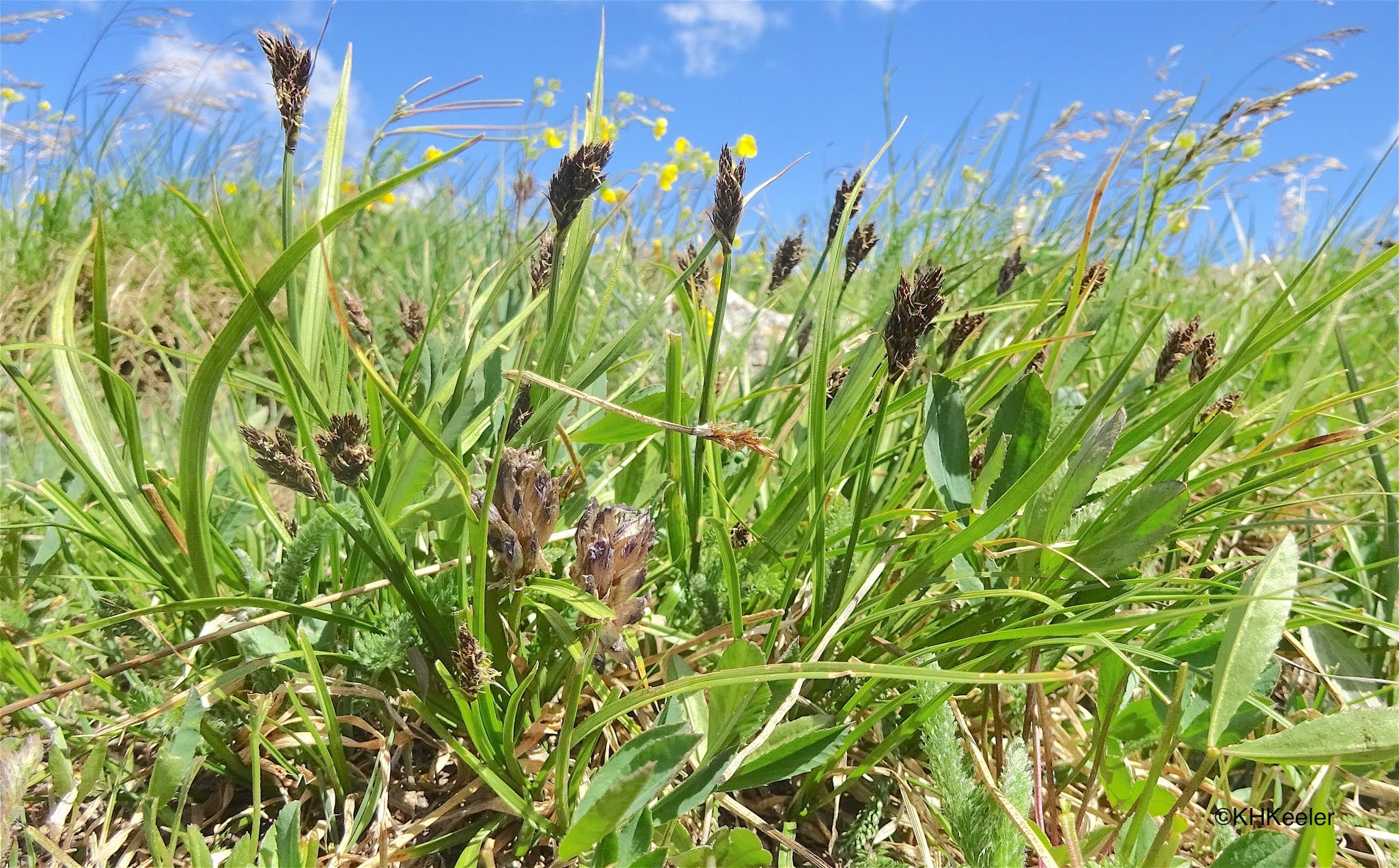Ever heard of sedges? They’re not as glamorous as roses, but these tough little plants have a knack for surviving in the freezing cold and harsh conditions of high mountaintops. They’re like the ninjas of the plant world, using sneaky tricks to thrive in the most unlikely places. Let’s dive into their secret world and see how they do it!
How Do Sedges Conquer the Alpine Biome?
Picture this: You’re trekking through the breathtaking alpine tundra. It’s cold, the wind is whipping around you, and the ground seems almost barren. Yet, amidst the rocks and snow patches, you spot vibrant green clumps of sedges, seemingly unfazed by the harsh conditions. How do these tough little plants manage to thrive in such a challenging environment? Let’s unlock the secrets of sedges and their incredible alpine adaptations.
The alpine world is a study in extremes—freezing temperatures, short growing seasons, and nutrient-poor soil. But sedges have a unique bag of tricks to overcome these challenges:
Key Points:
- Water Storage: Sedges absorb summer moisture and store it for drier periods.
- Dormancy: Sedges hibernate during winter, conserving energy.
- Shallow Roots: Roots stay shallow to tap into thin layers of thawed soil.
- Mycorrhizal Partnership: Sedges form symbiotic relationships with fungi to enhance nutrient uptake.
- Aerodynamic Design: Flexible stems and narrow leaves withstand high winds.
- Growth Form Variability: Sedges adapt their growth habit (tussocks or mats) to survive specific microclimates.
- Seed Dispersal: Wind, water, and animals disperse sedge seeds, facilitating colonization.
How Sedges Thrive in the Harsh Beauty of the Alpine Tundra
Let’s delve deeper into the fascinating world of alpine sedges and how they manage to not just survive, but flourish in such a harsh environment. Imagine a place with bone-chilling winds, intense sunlight, and soil that’s more rock than nutrients. This is the alpine tundra, and it’s where sedges have carved out their niche.
One of their secrets is their “live low and prosper” philosophy. Sedges hug the ground, growing in tight clumps or spreading out in dense mats. This helps them avoid the worst of the wind and soak up whatever warmth the earth offers. It’s all about making the most of a challenging situation.
Then there’s the matter of roots. In the alpine tundra, the good stuff—the nutrients plants need—is concentrated in a very thin layer of soil that thaws during the short growing season. Sedges have adapted with shallow root systems that spread out wide, making sure they can grab onto every bit of nourishment available.
To combat dryness and wind, sedges have leaves with a waxy coating that helps them hold onto precious water. They are also masters of efficiency, squeezing every last bit of goodness from the nutrient-poor soil, aided by their partnership with mycorrhizal fungi that help them absorb even more nutrients.
Beyond being remarkable survivors, sedges are also essential members of the alpine tundra community. Their strong, tangled roots act like a natural net, holding the thin soil in place and preventing erosion. They’re key players in the cycle of life and decay, breaking down organic matter, releasing nutrients back into the ecosystem, and providing food and shelter for a variety of animals.
However, the alpine tundra is facing the impacts of climate change. Warmer temperatures, changes in rainfall patterns, and the encroachment of plants from lower altitudes are all putting pressure on these resilient plants. Scientists are actively studying how these changes will affect alpine sedges and the entire tundra ecosystem. Understanding how sedges have adapted to such extreme conditions can give us valuable clues about how other species might respond to a changing climate. It’s a reminder that even in the harshest environments, life finds a way, and by studying these adaptations, we can learn a lot about resilience and the interconnectedness of our planet.
Thriving Against the Odds: Unveiling the Secrets of Alpine Plant Survival
Let’s explore how plants survive in the challenging alpine biome. As you hike up a mountain, you’ll notice the trees thinning out, the air getting colder, and the wind picking up. You might wonder how anything could survive up there. But look around – tenacious plants are clinging to the rocky slopes!
These aren’t your average plants; these are alpine survivors, equipped with clever tricks to thrive in some of the harshest conditions on Earth:
- Compact and Ground-Hugging: Alpine plants are often small, hugging the ground to avoid the worst of the wind, much like seeking shelter in a cozy cabin during a blizzard.
- Warmth and Protection: Many alpine plants have thick, almost rubbery leaves coated in a special waxy layer that acts like a raincoat and a thermos, preventing water loss and maintaining hydration.
- Efficiency is Key: The short growing season and limited sunlight have turned these plants into masters of efficiency. Like natural solar panels, they’ve developed ways to maximize photosynthesis, even in low light.
- Anchored for Survival: Alpine soil is often thin and rocky. To secure themselves, these resilient plants have developed extensive root systems that act like anchors, holding them firm against the wind and helping them access hidden water and nutrients.
- The Dormancy Strategy: When the going gets tough, many alpine plants go dormant during the winter months when temperatures plummet and the ground freezes solid. It’s their way of hitting the reset button until conditions improve.
Here are a few examples of these alpine champions:
| Plant Name | Adaptation |
|---|---|
| Alpine fescue (a type of grass) | Low, compact growth; deep roots |
| Black alpine sedge | Dark leaves for heat absorption; tufted growth |
| Alpine timothy | Rapid flowering and seed dispersal for a short season |
These are just a few examples of the remarkable adaptations that allow plants to thrive in the seemingly inhospitable alpine biome. Scientists are still unraveling the mysteries of these mountain dwellers, discovering new adaptations and gaining a deeper understanding of their resilience. One thing is certain: these plants are true survivors, reminding us that life finds a way even in the most challenging of environments.
Life on the Edge: Unraveling the Secrets of Alpine Animal Survival
The alpine biome is like a freezer on top of a mountain. So how do animals not just survive but actually thrive in this extreme environment? Over time, they’ve developed some seriously creative adaptations.
Staying Warm:
Think of a giant, fluffy parka—that’s what thick fur and layers of fat do for animals like mountain goats and snow leopards, keeping them warm even in plummeting temperatures. And their special hooves and claws act like built-in ice cleats, providing grip on the steep, icy terrain.
Breathing Easy in Thin Air:
The thin air at high altitudes is like trying to breathe through a straw. Alpine animals have evolved impressive tricks to cope. Their blood is packed with extra red blood cells to carry more oxygen, and their hearts are supersized to pump that oxygen-rich blood efficiently. Some even produce “antifreeze proteins” to prevent their cells from freezing solid.
Resourceful and Energy-Wise:
Alpine animals are masters of energy conservation and resourcefulness. Some hibernate during the harshest months, while others migrate to warmer areas where food is more abundant. Some dig burrows to escape the extreme cold and wind. Many animals stockpile food throughout the warmer months, stashing away nuts, seeds, or even prey animals.
Beyond the Cold:
The alpine biome presents challenges beyond just the cold:
- Sun Protection: The thin atmosphere means intense UV radiation. Alpine animals have evolved protective pigments in their skin and eyes, like built-in sunglasses.
- Finding Food: Limited plant life makes food scarce. Some animals have specialized diets, becoming experts at finding and digesting hardy plants, while others rely on their food caches.
- Conquering Hypoxia: The low oxygen levels (hypoxia) at high altitudes require efficient oxygen uptake. Alpine animals have adapted over generations to essentially have turbocharged lungs!
Alpine Animal All-Stars:
- Snow Leopard: Equipped with thick fur, large paws for snow, and powerful legs for leaping in rugged terrain.
- Mountain Goat: Boasts specialized hooves for grip, a thick double-layer coat, and efficient oxygen use.
- Pika: Thrives with its small body size, burrowing skills, food caching behavior, and high red blood cell count.
- Chinchilla: Stays warm with the densest fur of any mammal and uses its large ears to radiate heat.
- Andean Condor: Soars in thin air with its huge wingspan and survives by scavenging.
Researchers are continually uncovering the remarkable adaptations of alpine animals. These adaptations highlight the incredible resilience of life in extreme environments and remind us of the interconnectedness of our planet.
The alpine biome is a fragile ecosystem that is home to a variety of unique plants and animals. However, this biome is facing a number of threats, including climate change, pollution, and threats to an alpine biome. Understanding these threats and working to protect these alpine habitats is crucial for ensuring the survival of these amazing species.
- Jesus Bible: Discover Jesus’s Story Throughout Scripture - April 27, 2025
- Don Luis: Unraveling the 16th-Century Virginia Mystery - April 27, 2025
- Captain J’s Kauai Tours: Unforgettable Na Pali Coast Adventures - April 27, 2025

















1 thought on “Unlocking the Secrets of Sedges: How These Hardy Plants Survive the Alpine Challenge”
Comments are closed.